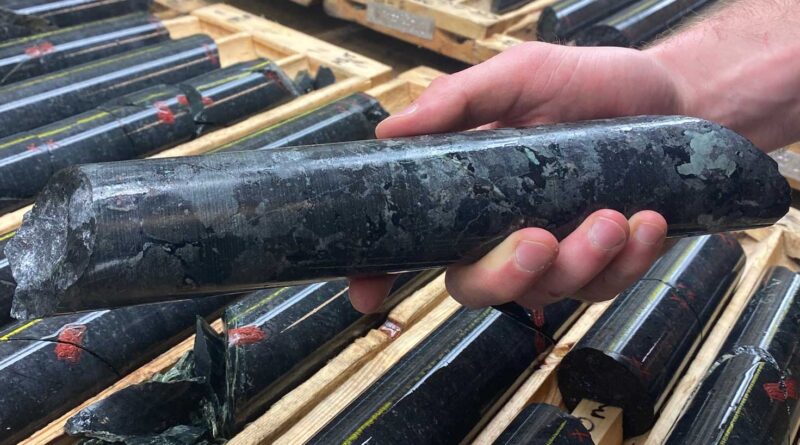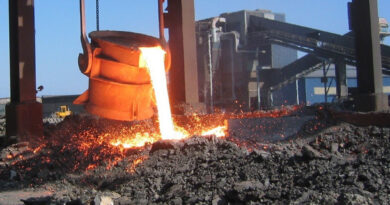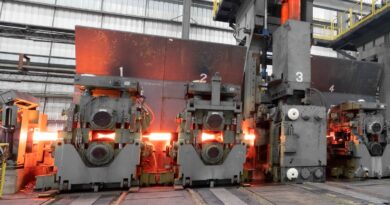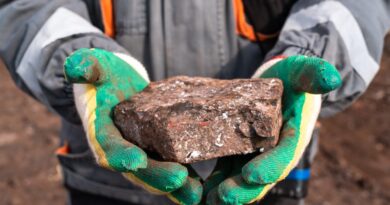Canada Nickel accepts Musk’s challenge for eco-metal
Canada Nickel Co. said it’s looking into building a facility that will process zero-carbon nickel. They are taking Elon Musk up on his offer to efficiently mine nickel, guaranteeing it will be carbon free.
The company says it is advancing the next generation of high quality, high potential nickel-cobalt projects to deliver the metals needed to power the electric vehicle revolution and feed the high growth stainless steel market.
Canada Nickel has created a wholly-owned subsidiary, NetZero Metals, to begin the research and development of a processing facility that would be located in the Timmins, Ontario region with the goal of utilizing existing technologies to produce zero-carbon nickel, cobalt and iron products.
The Company has applied for trademarks for the terms NetZero Nickel, NetZero Cobalt, and NetZero Iron in U.S., Canada, and other jurisdictions related to zero-carbon production of nickel, cobalt, and iron products.
“The electric vehicle industry and many other consumer sectors needs zero-carbon metal this decade – not in a nebulous 2050 timeframe contemplated by many other resource companies,” said Mark Selby, Chair & CEO of Canada Nickel.
“As a result of the unique advantages of the Timmins region with its close proximity to zero-carbon hydroelectricity and our Crawford Nickel-Cobalt Sulphide project, comprised largely of serpentine rock that naturally absorbs CO2 when exposed to air, Canada Nickel has the potential to develop zero-carbon products that our customers are expecting from the mining sector.
With nickel as a preferred metal to power the clean energy revolution, our commitment to net zero-carbon production is the right step to take for the environment, for consumers, and for our investors.”
Serpentine rock, the host rock comprising more than 90 per cent of the mass of the resource at the Crawford Nickel-Cobalt Sulphide Project1, has had numerous studies completed that note that the rock naturally absorbs carbon dioxide (CO2) when exposed to air through a naturally occurring process of spontaneous mineral carbonation.
The nickel industry faces a number of challenges as the current processing approach of laterite and sulphide ores generate a significant environmental footprint in the form of SO2 and CO2 emissions.
These environmental challenges will only worsen given the industry supply profile with the bulk of recent nickel supply growth and the main source of future production growth being nickel pig iron production in Indonesia, which, according to industry sources, uses 25-30 tonnes of coal to produce each tonne of nickel, which when combined with other sources of CO2, generates nearly approximately 90 tonnes of Scope 1 and Scope 2 CO2 emissions per tonne of nickel produced.
For an electric vehicle battery pack that contained 50kg of nickel from this source, it would represent approximately 4 tonnes of CO2 emissions for that vehicle.
Other sources of nickel supply growth that have additional environmental footprint issues are HPAL projects in Indonesia that are considering technologies such as deep-sea discharge of tailings which would result in ocean discharge of approximately 100 tonnes of material per tonne of nickel.
KEY TECHNOLOGIES BEING EXPLORED TO DEVELOP A ZERO-CARBON FOOTPRINT OPERATION
Canada Nickel will explore the use of various alternatives to achieve its NetZero objectives in each stage of the mining process: Mining, Milling and Processing.
MINING
The biggest single technology to reduce the carbon footprint of mining activities is the utilization of electric rope shovels and trolley trucks which utilize electricity, rather than diesel fuel, as a power source wherever possible.
Given the close proximity to zero carbon hydroelectric generating capacity, electricity use in place of diesel fuel has the potential to significantly reduce carbon emissions. The deposition of waste rock and tailings during the mining process will also expose the serpentine rock to air which provides the potential for this material to absorb CO2 through natural mineral carbonation and offsetting any CO2 emissions from the project.
The exact amount and rate at which CO2 can be absorbed from materials mined at Crawford will be analyzed during upcoming phases of work.
MILLING
Traditionally, large scale processing of lower grade sulphide ores utilizes a significant amount of electricity. Again, the local proximity to hydroelectricity provide the potential to minimize carbon emissions for this stage of production.
NET-ZERO METALS – NICKEL-COBALT CONCENTRATE PROCESSING
Existing processes for processing nickel-cobalt concentrates to remove sulphur, iron, and other impurities have resulted in the generation of significant quantities of CO2, SO2, and other impurities for a number of producers worldwide.
Canada Nickel will explore the potential for producing nickel and cobalt products from existing pyrometallurgical processes such as roasting, sulphation roasting, and reduction using electric arc furnaces (utilizing natural gas rather coke or coal as a reductant) with the offgases captured and re-routed to allow the CO2 be captured by the waste rock and tailings from the Crawford nickel-cobalt sulphide project.
The Company will also look at existing hydrometallurgical processes to produce nickel and cobalt products such as the Albion or other similar processes, which generate minimal off-gases to produce nickel and cobalt products.
The off-gases will again be captured and treated to ensure CO2 and SO2 emissions are minimized.
NET-ZERO METALS – MAGNETITE CONCENTRATE PROCESSING
The Company will explore the potential for the production of iron products utilizing existing direct reduced iron (DRI) processes or reduction in electric arc furnaces utilizing natural gas and then re-routed to allow the CO2 to be captured by the waste rock and tailings from the deposit.
NEXT STEPS
The Company will announce some key leadership changes at the Board level to help guide the Company in this important endeavour. The NetZero approach will be incorporated into the work done for the engineering for the Preliminary Economic Assessment which has been previously announced and currently underway.
Specific studies to analyze the quantity and timing of CO2 absorption by the host rock at Crawford and process design for downstream processing of nickel and cobalt materials and magnetite concentrate will be announced and get underway through the remainder of the year.




